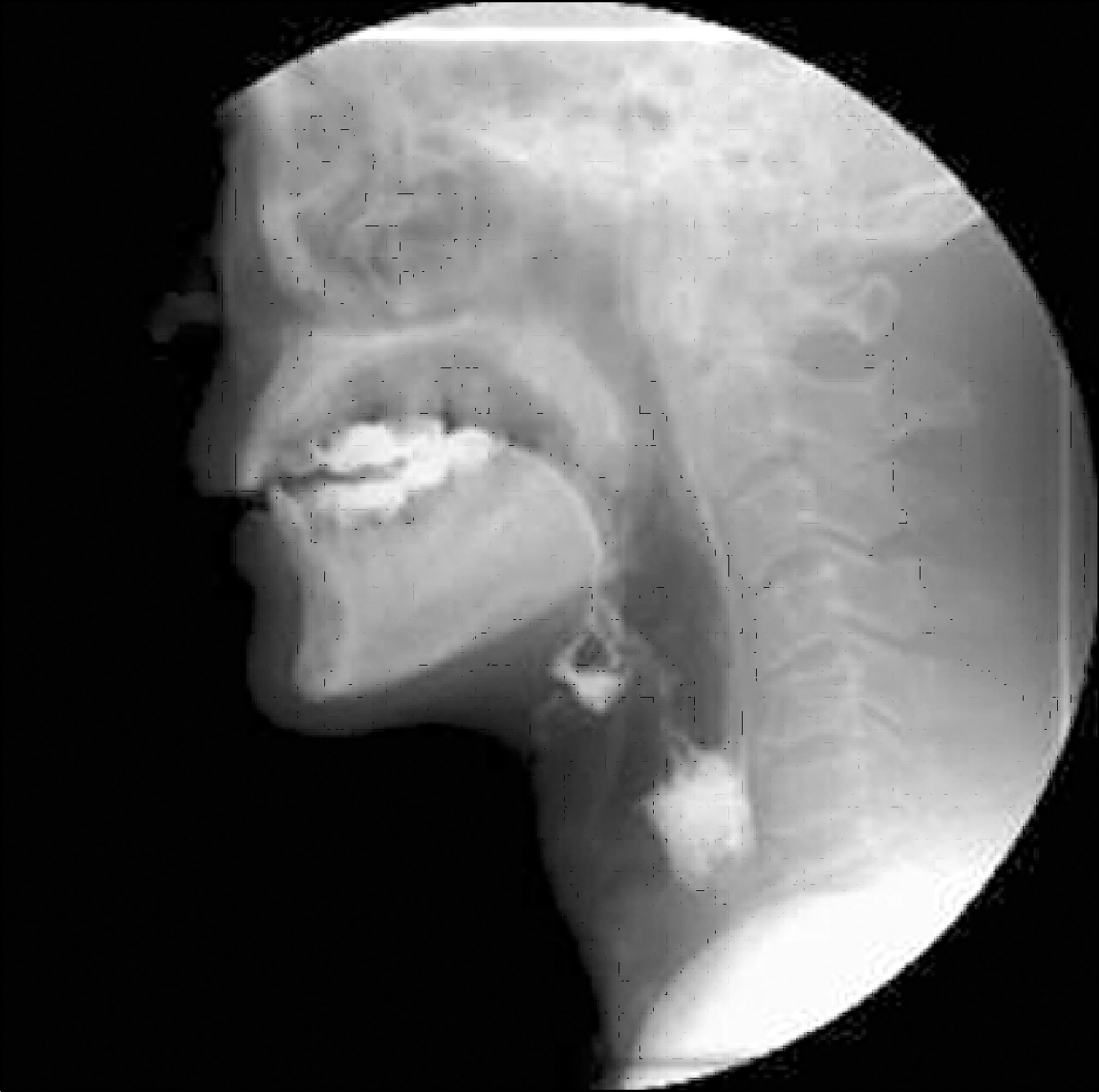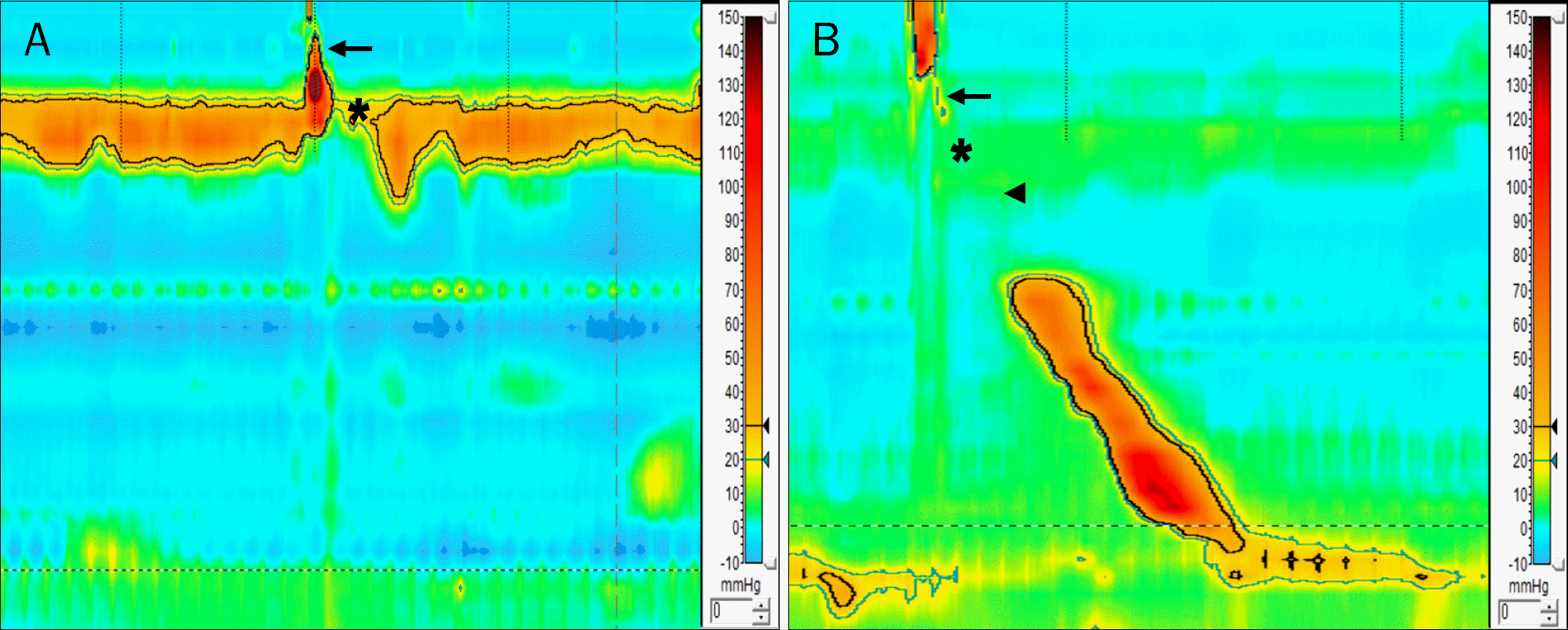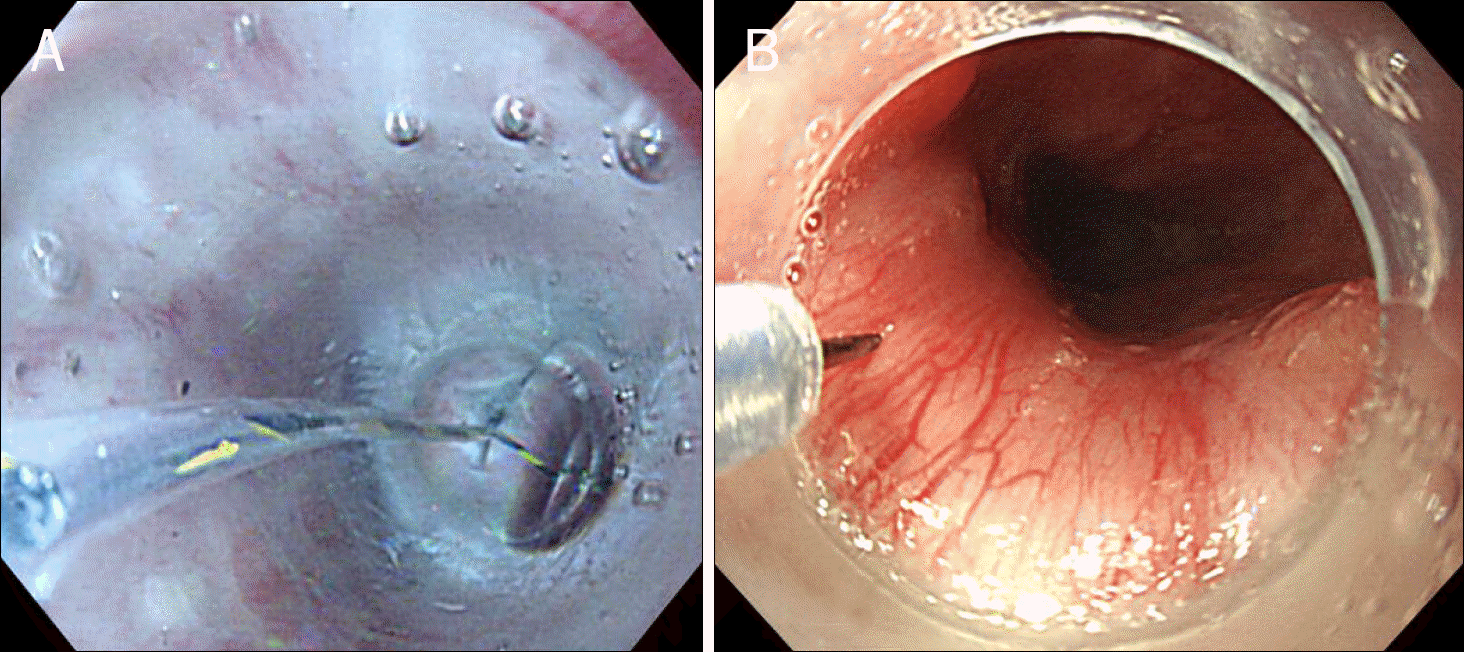References
1. Sivarao DV, Goyal RK. Functional anatomy and physiology of the upper esophageal sphincter. Am J Med. 2000; 108(Suppl 4a):27S–37S.

2. Cook IJ, Dodds WJ, Dantas RO, et al. Opening mechanisms of the human upper esophageal sphincter. Am J Physiol. 1989; 257:G748–G759.

3. Han DS, Chang YC, Lu CH, Wang TG. Comparison of disordered swallowing patterns in patients with recurrent cortical/sub- cortical stroke and first-time brainstem stroke. J Rehabil Med. 2005; 37:189–191.
4. Kuhn MA, Belafsky PC. Management of cricopharyngeus muscle dysfunction. Otolaryngol Clin North Am. 2013; 46:1087–1099.

5. Buchholz DW. Cricopharyngeal myotomy may be effective treatment for selected patients with neurogenic oropharyngeal dysphagia. Dysphagia. 1995; 10:255–258.

6. Clary MS, Daniero JJ, Keith SW, Boon MS, Spiegel JR. Efficacy of large-diameter dilatation in cricopharyngeal dysfunction. Laryngoscope. 2011; 121:2521–2525.

7. Kelly EA, Koszewski IJ, Jaradeh SS, Merati AL, Blumin JH, Bock JM. Botulinum toxin injection for the treatment of upper esophageal sphincter dysfunction. Ann Otol Rhinol Laryngol. 2013; 122:100–108.

8. Cook IJ, Kahrilas PJ. AGA technical review on management of oropharyngeal dysphagia. Gastroenterology. 1999; 116:455–478.

Fig. 1.
Video-fluoroscopic swallowing study shows retained barium residue on vallecular and pyriform sinus.

Fig. 2.
Sequential change of manometric findings in high resolution esophageal manometry. (A) Initial findings show decreased contractile pressure of pharyngeal muscle with aperistalsis (black arrow), lack of pharyngoesophageal coordination, and incomplete relaxation of upper esophageal sphincter (asterisk), resulting in hindrance of bolus transit. (B) Follow-up study after Botulinum toxin injection shows decreased resting and residual pressure of upper esophageal sphincter during deglutition (asterisk), resulting in complete bolus transit. However, contractile pressures of hypopharynx (black arrow) and proximal segment of esophageal body (arrowhead) near upper esophageal sphincter are also decreased compared to the initial study.

Fig. 3.
Endoscopic treatment of secondary cricopharyngeal dysfunction.(A) Under deep sedation, upper esophageal sphincter was dilated with a 20-mm controlled radial expansion balloon catheter for 2 minutes. (B) Diluted solution, equivalent to 100 U Botulinum toxin A, was injected with an endoscopic sclerosis needle at the upper esophageal sphincter level.





 PDF
PDF ePub
ePub Citation
Citation Print
Print


 XML Download
XML Download